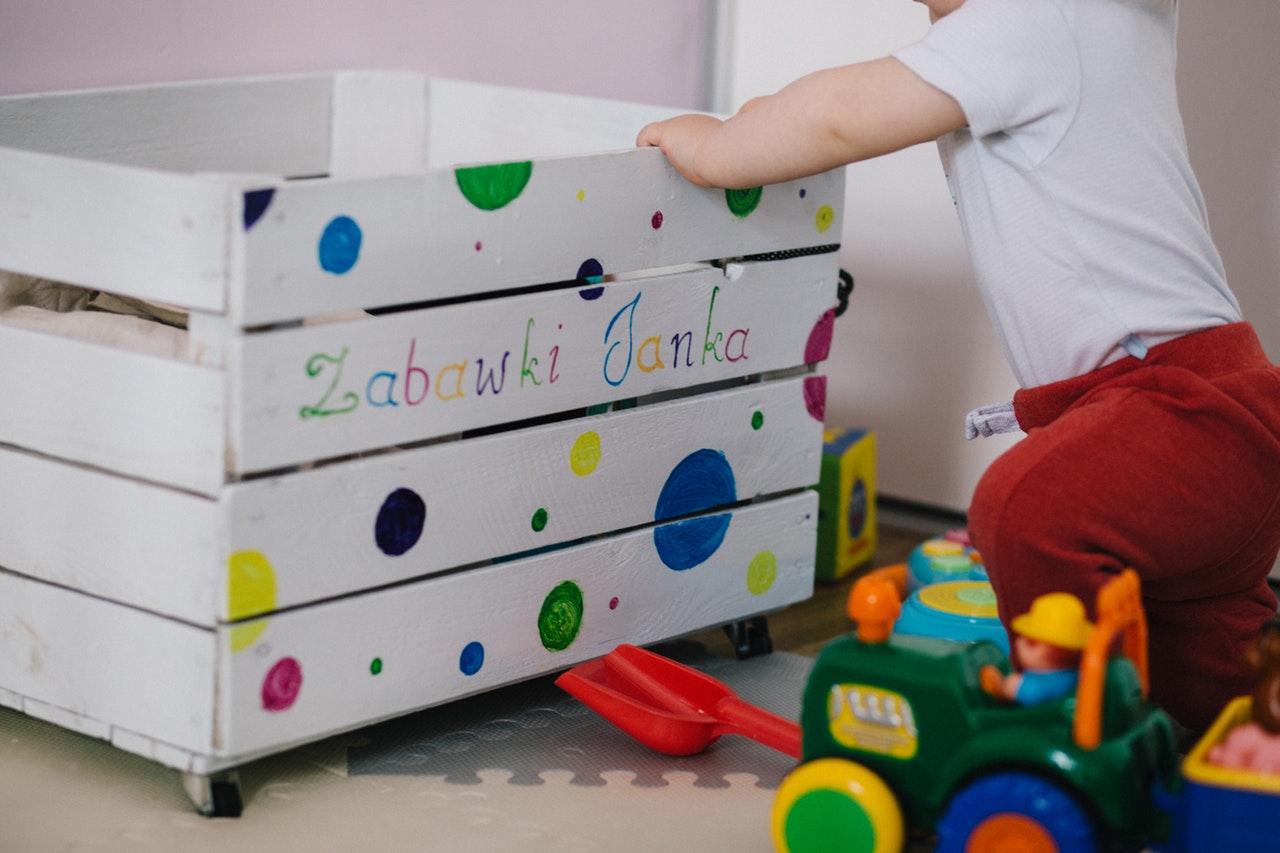Welcoming a newborn brings immense joy, but it often comes with the challenge of understanding and soothing their discomfort. Among the most common culprits for a crying, fussy baby are gas and colic. While distinct, they often present with similar symptoms and can be incredibly distressing for both the baby and the parents.
Gas in babies is a natural part of their developing digestive system. It occurs when air is swallowed during feeding or crying, or when bacteria in the gut break down food. Because a baby’s digestive system is still immature, they often struggle to expel this trapped air, leading to bloating, discomfort, and fussiness. You might notice your baby squirming, arching their back, pulling their legs up to their chest, or passing gas.
Colic, on the other hand, is defined by the “rule of threes”: a baby crying for more than three hours a day, at least three days a week, for more than three weeks. This intense, prolonged crying typically occurs in otherwise healthy, well-fed babies, often in the late afternoon or evening. The exact cause of colic is still unknown, but theories include an immature digestive system, food sensitivities, overstimulation, or an imbalance of gut bacteria. While not dangerous, colic can be incredibly frustrating and exhausting for parents.
The good news is that there are many gentle and effective strategies you can employ to help your baby find relief from both gas and colic pain. This guide will walk you through proven methods, from optimizing feeding to soothing techniques and when to seek professional advice.
Method 1: Optimizing Feeding Practices
How and what your baby eats can significantly impact the amount of air they swallow and how their digestive system processes food.
For Bottle-Fed Babies:
- Choose the Right Bottle and Nipple:
- Anti-colic bottles: These bottles are designed with special vents or internal systems to reduce air intake, preventing bubbles from mixing with the milk. Brands like Dr. Brown’s, Philips Avent Anti-colic, and Comotomo are popular choices.
- Slow-flow nipples: Ensure the nipple flow is appropriate for your baby’s age and sucking strength. If the flow is too fast, your baby might gulp and swallow excess air. If it’s too slow, they might suck harder, also leading to air intake. The milk should drip steadily, not pour out.
- Proper Bottle Angle:
- When feeding, hold the bottle at an angle that keeps the nipple completely full of milk. This prevents your baby from sucking in air along with the milk.
- Keep your baby in a more upright position during feeding. This helps gravity work in your favor, allowing milk to flow down and air to rise up.
- Frequent Burping:
- Burp your baby often: Don’t wait until the end of the feeding. Burp every 1-2 ounces for newborns, or mid-feeding for older infants.
- Effective burping positions:
- Over the shoulder: Hold your baby with their chin resting on your shoulder, gently patting or rubbing their back.
- Sitting on your lap: Sit your baby upright on your lap, supporting their chest and head with one hand, and gently pat or rub their back with the other. Lean them slightly forward.
- Face down on your lap: Lay your baby across your lap on their stomach, with their head slightly elevated. Gently pat or rub their back.
For Breastfed Babies:
- Check Latch and Position:
- Good latch: Ensure your baby has a deep latch, taking in not just the nipple but also a good portion of the areola. A shallow latch can lead to gulping air. Listen for swallowing sounds, not clicking or smacking.
- Upright position: Try feeding your baby in a more upright position to help milk flow smoothly and reduce air intake. The “football hold” or “upright cradle hold” can sometimes be helpful.
- Slow Down Let-Down (If Applicable):
- If you have a strong let-down (milk flow), your baby might gulp rapidly, leading to gas. Try expressing a little milk before feeding or feeding in a reclined position to let gravity slow the flow.
- Monitor Your Diet:
- While controversial and not always necessary, some mothers find that certain foods in their diet (e.g., dairy, caffeine, gassy vegetables like broccoli, cabbage, beans) can contribute to gas or fussiness in their breastfed baby. If you suspect a food sensitivity, try eliminating one suspected food for a week or two to see if there’s an improvement. Always consult your pediatrician before making significant dietary changes.
Method 2: Physical Comfort and Movement
Gentle physical interaction can help move trapped gas through your baby’s digestive system.
- Bicycle Legs:
- Lay your baby on their back.
- Gently move their legs in a cycling motion, pushing their knees towards their belly. This mimics movement and helps massage their intestines, encouraging gas to pass. Do this for a few minutes at a time.
- Tummy Time:
- Supervised tummy time is excellent for developing head and neck control, but it also applies gentle pressure on your baby’s abdomen, which can help relieve gas.
- Place your baby on their tummy on a firm, safe surface (like a play mat) for short periods.
- Gentle Tummy Massage:
- Lay your baby on their back.
- Using warm hands and a little baby-safe lotion or oil, gently massage their tummy in a clockwise direction.
- You can also try the “ILU” massage technique:
- Draw an “I” down your baby’s left side (their left).
- Draw an “L” across their tummy from their right to left, then down their left side.
- Draw a “U” from their lower right side, up and across their tummy, then down their left side.
- Warm Bath or Warm Compress:
- A warm bath can help relax your baby’s muscles and soothe their tummy.
- Alternatively, a warm (not hot!) washcloth or a warmed rice sock (test temperature carefully!) placed on your baby’s abdomen can provide comforting warmth and gentle pressure.
Method 3: Soothing Techniques for Colic Pain
Colic crying is often intense and relentless. These techniques focus on calming and comforting your baby, mimicking the womb environment.
- The “5 S’s” by Dr. Harvey Karp: This method, popularized by pediatrician Dr. Harvey Karp, focuses on activating the calming reflex in newborns.
- Swaddling: Tightly wrap your baby in a blanket to provide a secure, womb-like feeling and prevent startling reflexes. Ensure it’s not too tight around the hips.
- Side/Stomach Position: Hold your baby on their side or stomach (only when awake and supervised) to relieve pressure on their tummy. Always place babies on their back to sleep.
- Shushing: Make a loud, consistent “shushing” sound near your baby’s ear, mimicking the sounds they heard in the womb. This provides white noise.
- Swinging: Gentle, rhythmic motion, like swaying, rocking, or using a baby swing, can be very calming. Ensure the motion is small and jerky.
- Sucking: Offer a pacifier, your clean finger, or allow them to breastfeed if they are comfort nursing. Sucking is naturally soothing for babies.
- White Noise:
- The womb is a noisy place. Consistent white noise (like a fan, vacuum cleaner, white noise machine, or a white noise app) can help drown out distracting household sounds and create a calming environment. Ensure the volume is not too loud.
- Movement and Motion:
- Baby carrier or wrap: Keeping your baby close and in motion (while walking around the house) can be very soothing.
- Car rides: The vibrations and consistent motion of a car ride often calm colicky babies.
- Baby swing/bouncer: Use a swing or bouncer with gentle motion and vibrations, but always supervise your baby and adhere to safety guidelines.
- Skin-to-Skin Contact:
- Holding your baby skin-to-skin (kangaroo care) can be incredibly comforting for both of you, promoting bonding and regulating your baby’s temperature and breathing.
Method 4: Dietary Adjustments and Medications (Consult Doctor)
While most remedies are behavioral, sometimes dietary adjustments or over-the-counter medications can be considered under medical guidance.
- Formula Changes (for formula-fed babies):
- If you suspect your baby’s formula might be contributing to gas or colic, consult your pediatrician before switching. They might recommend:
- A “gentle” formula with partially hydrolyzed proteins, which are easier to digest.
- A sensitive formula that is lactose-reduced.
- In rare cases, a hypoallergenic formula if a cow’s milk protein allergy is suspected.
- If you suspect your baby’s formula might be contributing to gas or colic, consult your pediatrician before switching. They might recommend:
- Simethicone Drops (Gas Drops):
- Simethicone is an over-the-counter medication (like Mylicon or Little Remedies Gas Relief) designed to break down gas bubbles in the stomach and intestines.
- It’s generally considered safe and doesn’t get absorbed into the baby’s bloodstream.
- Always consult your pediatrician before administering any medication to your baby, and follow dosage instructions carefully. Opinions vary on its effectiveness for colic, but many parents find it helpful for general gas discomfort.
- Probiotic Drops:
- Some research suggests that certain probiotic strains, particularly Lactobacillus reuteri, may help reduce crying time in breastfed babies with colic.
- Discuss with your pediatrician if probiotic drops are appropriate for your baby.
When to Seek Medical Advice
While gas and colic are common and usually resolve on their own, it’s essential to know when to contact your pediatrician. Seek immediate medical attention if your baby experiences:
- Fever (especially for newborns under 3 months)
- Vomiting (especially projectile vomiting or green/yellow vomit)
- Diarrhea or bloody stools
- Poor feeding or refusal to feed
- Lack of wet diapers or bowel movements
- Significant lethargy or unresponsiveness
- Rash
- A sudden change in the crying pattern or intensity that is unusual for your baby
- Weight loss or poor weight gain
- If you are feeling overwhelmed or struggling to cope with your baby’s crying. Parental mental health is crucial, and your pediatrician can offer support or resources.
Conclusion
Dealing with a gassy or colicky baby can be incredibly challenging and emotionally draining. Remember that gas and colic are temporary phases, and with patience, persistence, and these practical strategies, you can significantly alleviate your baby’s discomfort. Focus on proper feeding techniques, incorporate gentle physical remedies, and utilize soothing methods to comfort your little one. While it’s a difficult journey, understanding these conditions and knowing how to respond effectively will help you navigate this period with more confidence and provide the best possible comfort for your baby.
FAQ Section
Q1: What is the main difference between gas and colic in babies?
Gas is a symptom of discomfort caused by trapped air in the digestive system, leading to bloating, squirming, and fussiness. Colic is a syndrome defined by prolonged, intense, and unexplained crying (more than 3 hours a day, 3+ days a week, for 3+ weeks) in an otherwise healthy baby. While gas can contribute to colic, colic’s cause is often more complex and less understood.
Q2: How can I tell if my baby has gas versus another issue?
Signs of gas often include fussiness after feeding, pulling legs up to the chest, arching the back, a distended belly, and eventually passing gas. If your baby has a fever, is vomiting forcefully, has bloody stools, or shows signs of extreme lethargy, it’s likely more than just gas, and you should contact your pediatrician immediately.
Q3: Are gas drops (simethicone) safe and effective for newborns?
Simethicone (gas drops) is generally considered safe for newborns as it is not absorbed into the bloodstream. It works by breaking down large gas bubbles into smaller ones, making them easier to pass. While many parents find it helpful for general gas discomfort, its effectiveness for true colic is debated. Always consult your pediatrician before giving any medication to your baby and follow dosage instructions precisely.
Q4: Can my diet cause gas or colic in my breastfed baby?
While less common than often thought, in some cases, certain foods in a breastfeeding mother’s diet (most commonly dairy, soy, or caffeine) can contribute to fussiness, gas, or colic-like symptoms in the baby due to sensitivities. If you suspect a dietary link, discuss an elimination diet with your pediatrician or a lactation consultant. Do not make drastic dietary changes without professional guidance.
Q5: When does baby gas and colic typically start and end?
Gas can occur from birth as a baby’s digestive system develops and often becomes more noticeable in the first few weeks. Colic typically begins around 2-3 weeks of age, peaks around 6-8 weeks, and usually resolves on its own by 3-4 months of age, though some babies may experience it longer.





